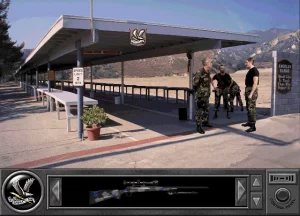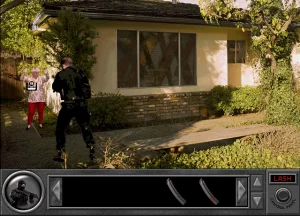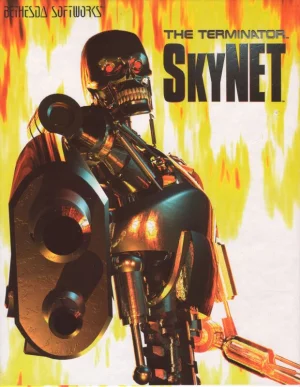Daryl F. Gates' Police Quest: SWAT

Description
The majority of your time in this game will be spent engaging in various forms of training, which is in line with the hyper-realistic tone of the other games in the series. In point of fact, the game consists of little more than three distinct actual tasks (a mentally ill grandmother, a barricaded fugitive, and a terrorist attack). Following the completion of a single training exercise and subsequent attendance at a tactical lecture, the player will be able to access the game's first mission. After finishing the first, you'll be able to move on to the second. When a player has demonstrated sufficient skill in a number of iterations of the first two, they are eligible to play the third version. There is a limited number of possible permutations, but the missions are designed to play out somewhat differently each time you play through them. This is done to boost the replay value. Acting either as an element leader, with a significantly expanded list of radio commands to direct their team, or as a sniper, with randomized wind conditions forcing the player to adjust their rifle scope to ensure an accurate shot, the role that the player takes during the final mission also differs based on the career path that they have selected during training. The player can choose to act either as an element leader or as a sniper.
The training segment of the game gives the player multiple options, some of which will result in verbal reprimands from the instructor. If the player tries to "skip" the briefings, for instance, the commander will reprimand the player for their behavior. If the player is instructed to travel to one area but instead goes to an other location, someone there will inform "SWAT Pup" that they should be at the other site instead. If the player is annoying to other people in the various venues, whether by trying to chat to them an excessive amount or simply loitering about, other folks may become upset as well. However, the only way to receive any kind of disciplinary action is to shoot one's fellow officers in the few moments in which this is feasible, and doing so immediately ends the game.
Verbal and nominal commands can be transmitted through a character's LASH radio, enabling the user to solicit aid from other team members or, if playing the role of element commander, to give those team members orders.
Although the only objects the player will ever carry are tactical gadgets such as angled mirrors, flashbangs, gas masks, and weapons, in-game items are stored in an inventory that behaves similarly to the inventory in other Sierra SCI adventure games of the era. These are given to the player as part of the pre-mission briefing at the beginning of each operation.
When you are in the training mode of the game, you play in first-person perspective. When interviewing witnesses or talking to fellow cops, it shifts into the third person. Although the player will spend most of their time in first-person perspective during missions, the player character will frequently be depicted moving between regions (or getting shot) in third-person perspective.















